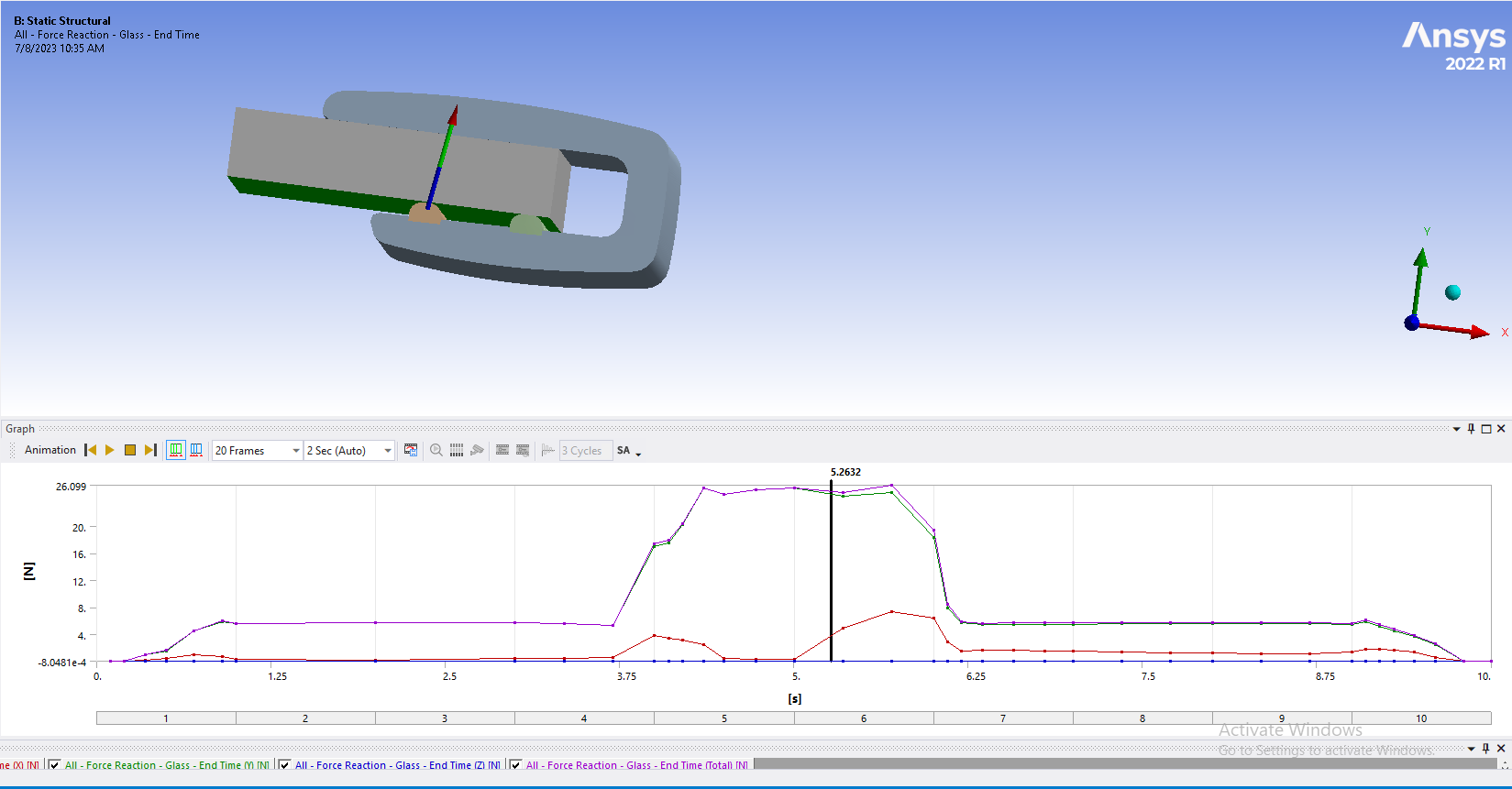TAGGED: displacement-load, force-reaction
-
-
July 8, 2023 at 4:52 am
Hakim Dina Anjum
Subscriber -
July 10, 2023 at 12:41 pm
Sampat Kumar
Ansys EmployeeHi Hakim,
The reaction force indicates how much force you have applied to the clamped body. To calculate this, you can apply the pull force to the clamped body and then see how much displacement and deformation is permissible according to your analysis, the Reaction force developed between the clamped part would be your grip force for the analysis.
Regards,
Sampat -
July 11, 2023 at 6:24 am
bla bling
SubscriberThat's right. You can apply a pull on the clamped body and then see the allowable displacement and deformation according to your analysis, The reaction force generated between the clamped part will be your clamping force for analysis .
-
July 12, 2023 at 8:32 am
Hakim Dina Anjum
SubscriberHow is it different from using a displacement boundary condition on the clamped body like I did here? The second half of the graph is during the "pull" operation. Except that I used a displacement boundary condition to represent the pull or retention, not force.
-
July 14, 2023 at 11:15 am
Sampat Kumar
Ansys EmployeeHi Hakim,
You can apply displacement, but you should remember that you are trying to displace the body from one point to another. You can apply the force reaction on the face of the bock where the displacement is applied to see the force required to pull the clamped body. In this case, you will have two friction forces: one static and the other kinetic. You can determine your grip forces by analysing static, limiting, and kinetic friction as compared to the applied force for your particular analysis. you can adjust your grip forces according to the pull force.
Regards,
Sampat
-
- The topic ‘Understanding the grip force of a clamp’ is closed to new replies.


- LPBF Simulation of dissimilar materials in ANSYS mechanical (Thermal Transient)
- Convergence error in modal analysis
- Simulate a fan on the end of shaft
- Nonlinear load cases combinations
- Real Life Example of a non-symmetric eigenvalue problem
- How can the results of Pressures and Motions for all elements be obtained?
- Contact stiffness too big
- Test post on Forum – LLM response – SC
- 13-Node Pyramid Element Shape Function
- Element Birth and Death

-
4492
-
1494
-
1376
-
1209
-
1021

© 2025 Copyright ANSYS, Inc. All rights reserved.








